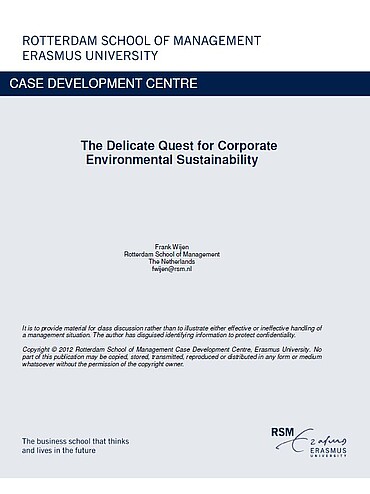Citation Note
Based on field research; 11 pages.
Follow the 'handle' link to access the Case Study on RePub.
For EUR staff members: the Teaching Note is available on request, you can contact us at rsm.nl/cdc/contact/
For external users: follow the link to purchase the Case Study and the Teaching Note.
Objective
Learning objectives: A first objective of the case is to provide students with a better understanding of how firms can interact with consumers to support consumer decision making in different stages of the ‘customer journey’ (with a focus on the financial services industry). For example, the case can be used to discuss how firms can support consumer information search, consumer purchase decisions, consumer (financial) product monitoring, and consumer (financial) product performance evaluations. Secondly, the case can also be used to analyse consumer channel usage and how this usage varies across consumers and consumer situations. Customer-centred marketing typically requires balancing information consistency across channels on the one hand and personalising messages and services on the other. The case offers a framework to discuss how these different goals can be met. Thirdly, the case addresses firms’ strategic decision to position itself across the service-channel mix. More specifically, the case allows students to investigate the question of service branding in particular in an online setting. What factors determine an online service firm’s brand value and how is this brand value extended to other channels or to other sub-brands online? Implications for the firm’s own internal focus can also be discussed (e.g., customer closeness vs. operational excellence).
description
After an environmentally devoted Dutch firm was sold to an environmentally less conscious new owner, the company had to forge a new strategy for maintaining a green reputation.
Abstract
Abstract: Greenheart, a multinational food producer headquartered in the Netherlands, has long sought environmental sustainability. Greenheart initially made great strides: it embraced sustainability as a core value, rethought its business activities, was open to a variety of (external) stakeholders, and allocated ample means to reduce its environmental impact. The initiative, however, lost momentum following a change of ownership and the advent of economic difficulties. Sustainability was interpreted in a more restricted sense and became of secondary importance. Environmental activities now had to fit within the existing business framework and a more restricted number of predominantly internal stakeholders had to be considered. Finally, the environmental budget largely evaporated. At the same time, the company’s environmental activities were undertaken on a more structured, integrative, and “realistic” basis. Were the changes in Greenheart’s environmental practices positive or negative from the viewpoint of sustainable business development? What were the critical factors accounting for the changes in corporate environmental performance?
usage
The case provides unique insight into a topic relevant to many firms: How to convert good intentions into good practices? By examining the evolution of a firm’s environmental practices, the case addresses critical questions: what is the most realistic way to pursue environmental goals in a business environment, and what are the critical factors in institutionalizing changes in corporate practices to boost environmental performance.
